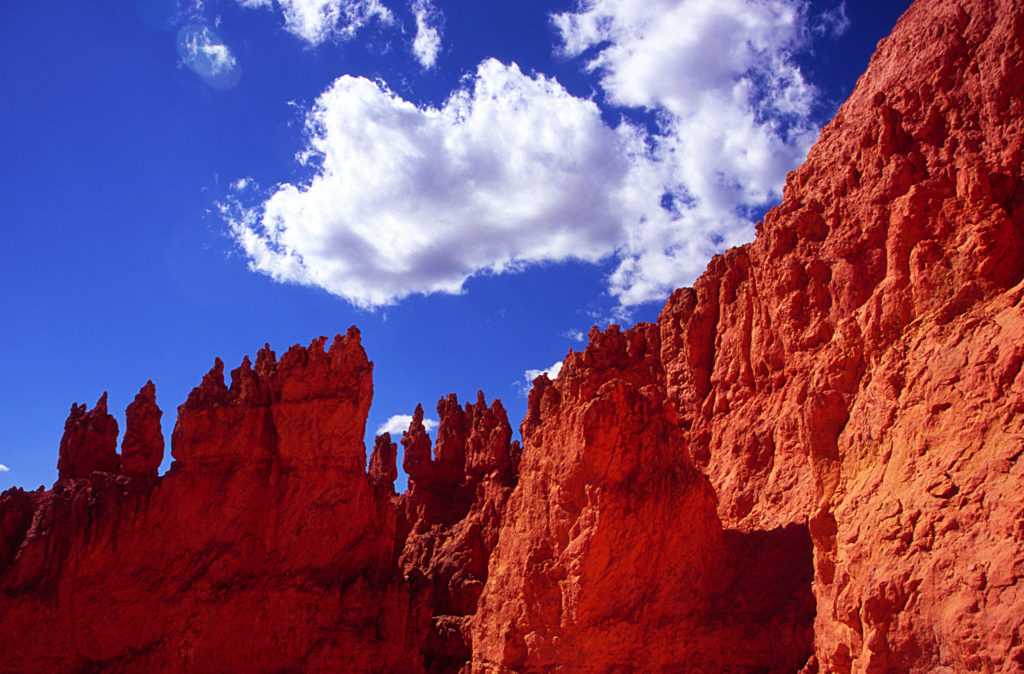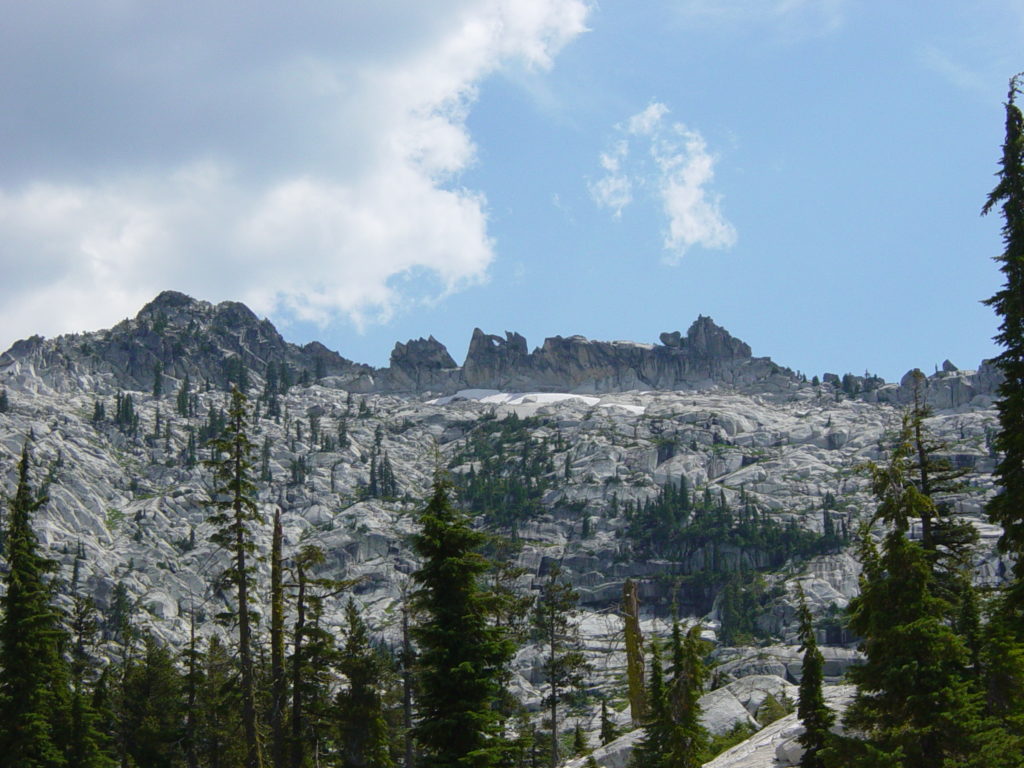
Eric is a reluctant mountaineer.
His childhood in Oregon’s Willamette Valley offered ample opportunity for time outside: picking blackberries, fishing for trout, chucking dirt clods and the like. His family took regular trips to Tokatee Lake, and Cousin Jeff was a willing partner for adventures of every kind. The latter days of his adolescence found him applying his natural gifts as an athlete—blazing nine-patterns down the gridiron and tossing up three-pointers for the South Albany Rebels. Although new priorities emerged during college (namely girls, beer and football), it was his migration south, to the paved-over landscape of San Francisco, that completed his degeneration into a bona fide city dweller. Corporate job. Convenient bus routes. Twenty-three restaurants in a two-block radius. The transformation suits him fine. His wife is very understanding. A Northwest native herself, Jen spends her Saturdays bouncing from yoga class to surf break, casually asserting herself over her urban trappings. Eric, meanwhile, is content (nay, positively delighted) to spend his day on the couch, tracking twelve different college football games on three screens.
This is why I found it so surprising that he was one of the first to sign on as I organized a group climb in the High Sierra. It helped that OSU had a bye that weekend, and I’m sure Jen offered more than a little encouragement. Mount Langley is not the most majestic summit in the Sierra. Nor is it a technically challenging climb. Sitting just four miles south of Mt. Whitney, it is usually overlooked by the casual explorer. The twenty-two mile round-trip hike to the summit requires a bit of commitment or a friend like me who is willing to gloss over the details.
Jody and I were repeat visitors to Langley, the memory of our 2004 escapade still fresh in our minds. Neither Jen nor Eric had spent any time in the High Sierra. Climbing a fourteener is certainly one way to get your feet wet. We made a three-day weekend of it. An all-night drive on Friday was quickly followed by a six-mile hike into the Cottonwood Lakes Basin. After setting up camp, most of Saturday was spent napping, eating and checking out the line over Old Army Pass. The Cottonwood Lakes Basin is a stunning slice of the Sierra Nevada. I harbored a wish that spending the weekend in such a great locale would get Eric & Jen stoked for future trips. Were it not for the slag heap that is Mount Langley, I’d have more confidence in this outcome.
We woke early on Sunday and cooked a hot breakfast before leaving camp. The most challenging part of the climb came early as we made our way up and over Old Army Pass. Once we reached the pass, our goal was more visible. We took it slow, stopping every few minutes to catch our breath and “consider the view.” Despite tired legs and heavy breathing, we kept moving, one foot in front of the other. Eric looked haggard like the rest of us, but never once complained. Steady progress made up for a bit of misdirection that found us scrambling through some Class 2 sections of rock. Past the worst of it, Eric took more interest in the route-finding and studied the map every time we stopped. Our wobbly legs pushed us to the top around noon, and we enjoyed the views from the 14,026 foot summit. I pointed out the craggy summit of Mount Whitney, just four miles to the north, hoping Eric & Jen would show some interest in another trip next year. Of course, aligning the Mount Whitney lottery system with the OSU football schedule is easier said than done.
The hike down was uneventful until Eric twisted his knee with just a half mile to go. He took a pair of trekking poles and walked gingerly back to camp. That night we celebrated our success with freeze-dried lasagna, box wine, and dark chocolate. As the sunlight faded from the summit of Mount Langley, so did the burning in our lungs and the soreness of our legs. My friend Eric was in good spirits as we toasted our success. I’m proud of him, and I hope our trip offered a taste of his past, a bit of adventure for the skinny kid from Albany.
This post is part of the SierraSoul Archive. The trip took place in October, 2006 (or thereabouts).






